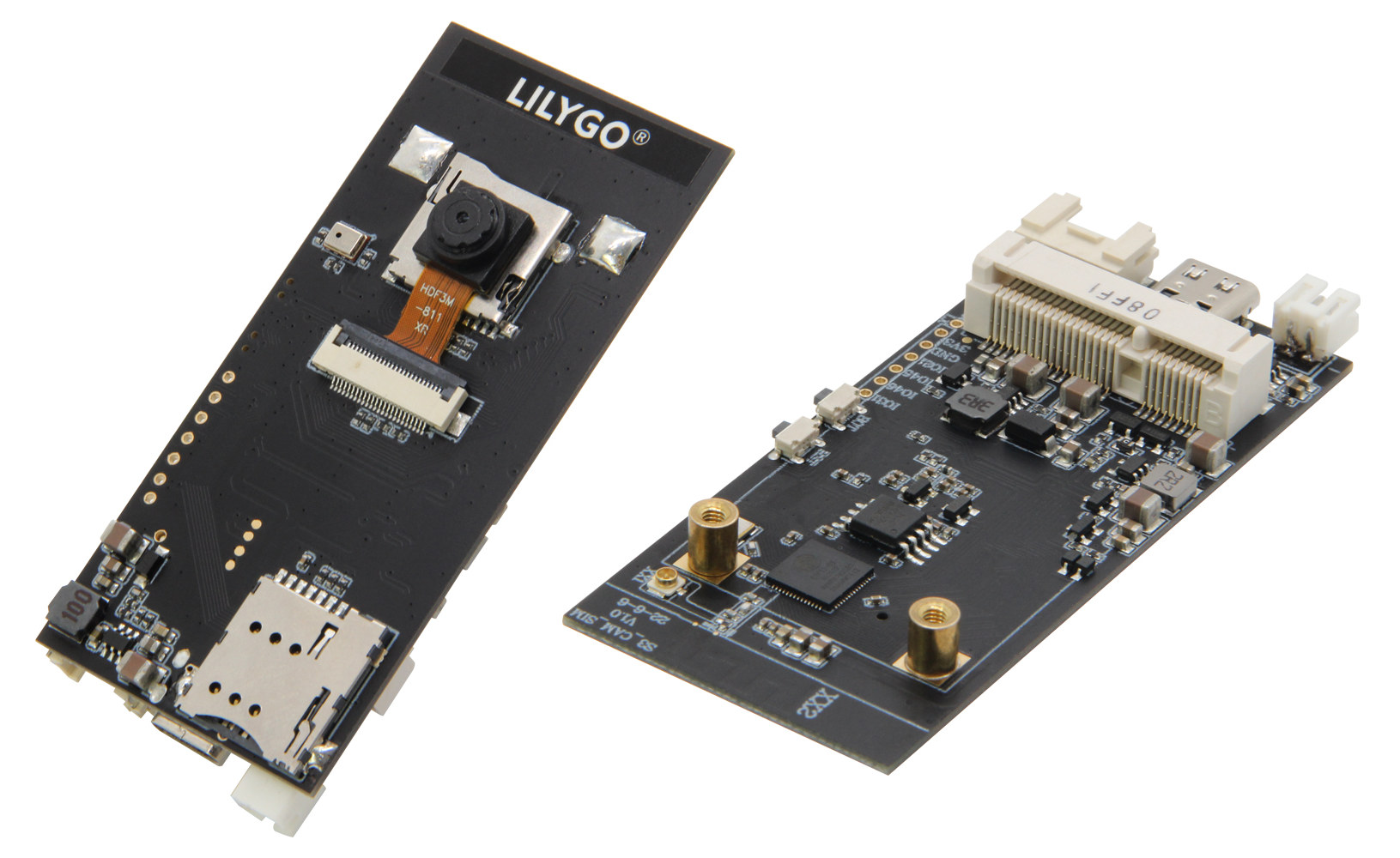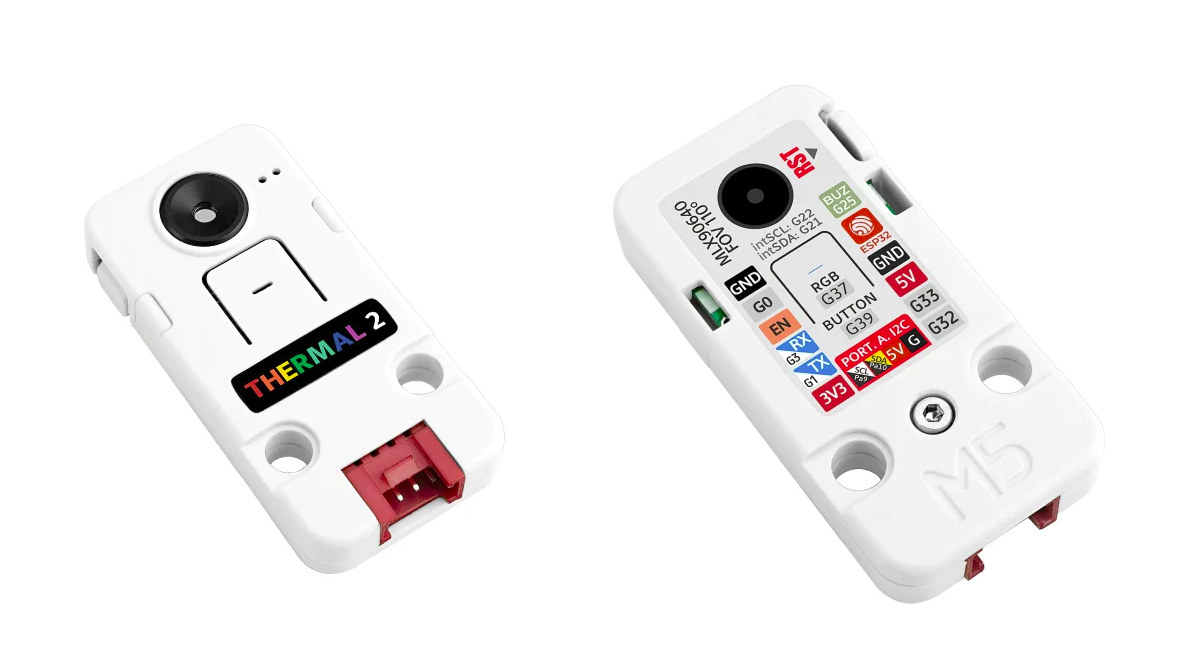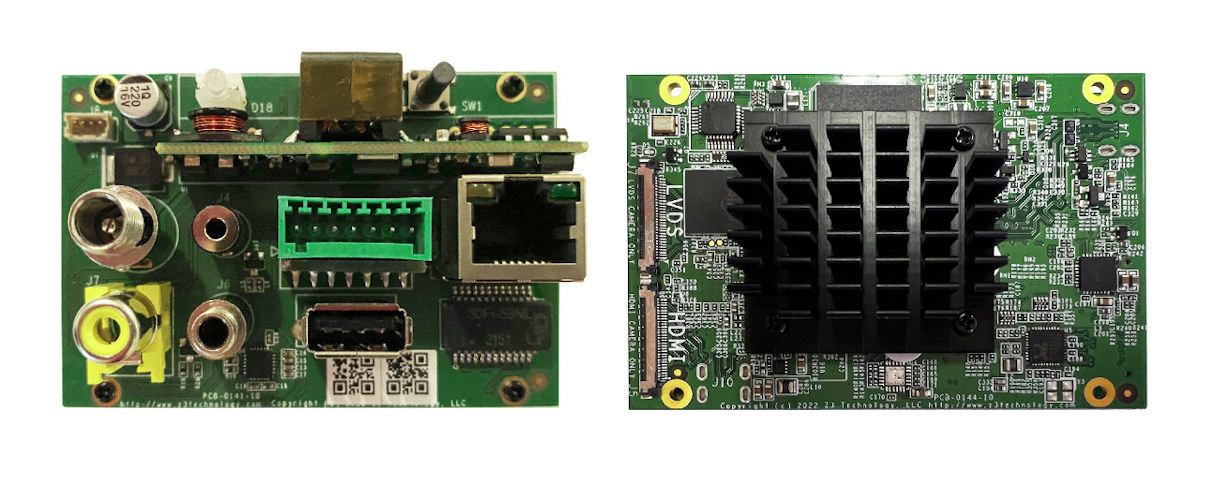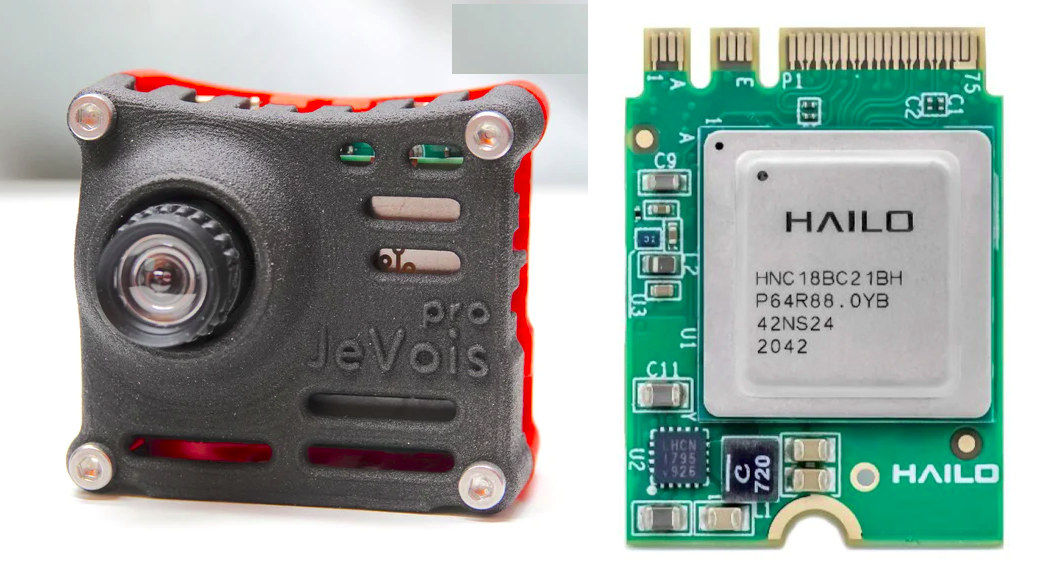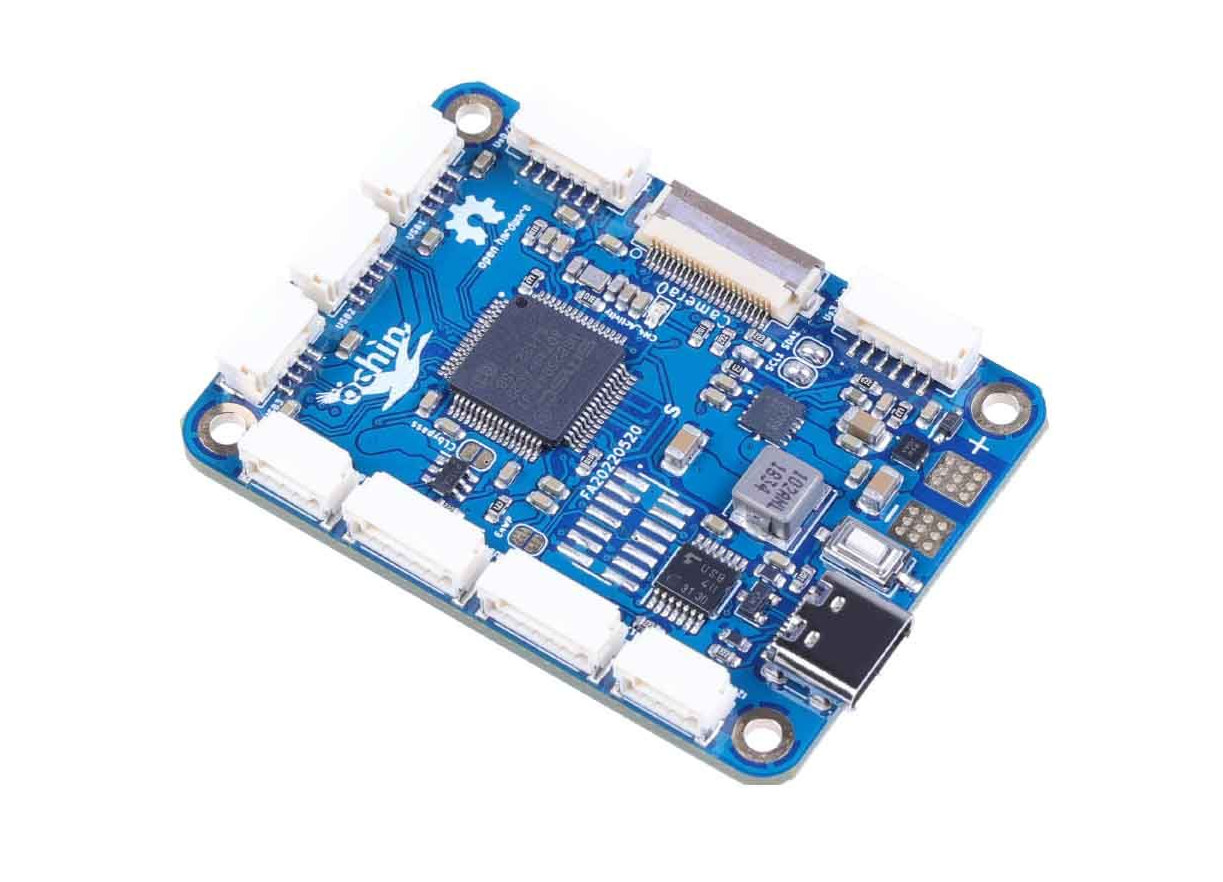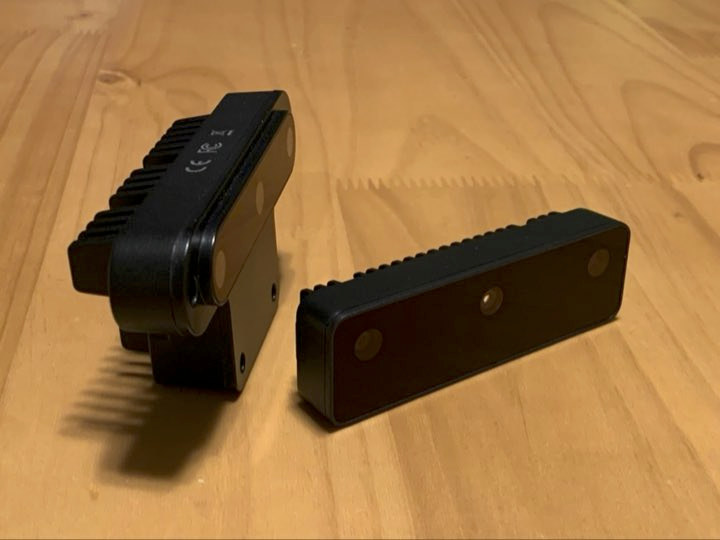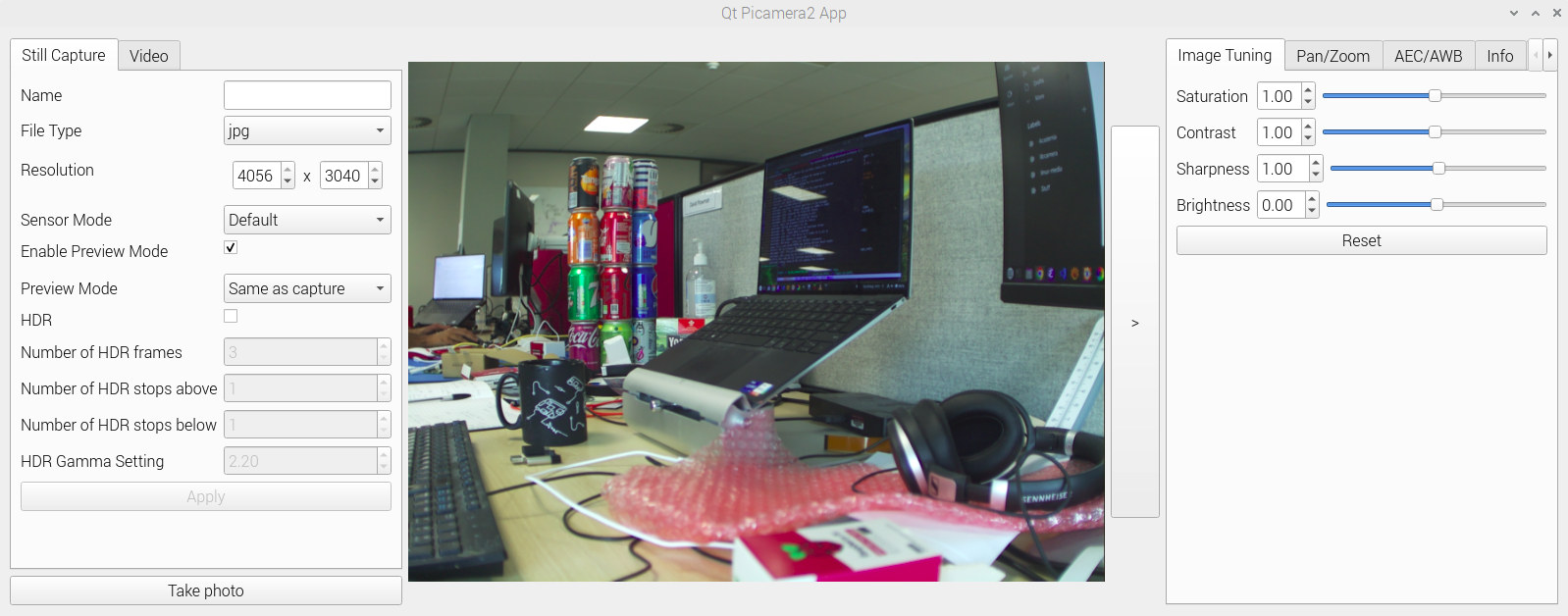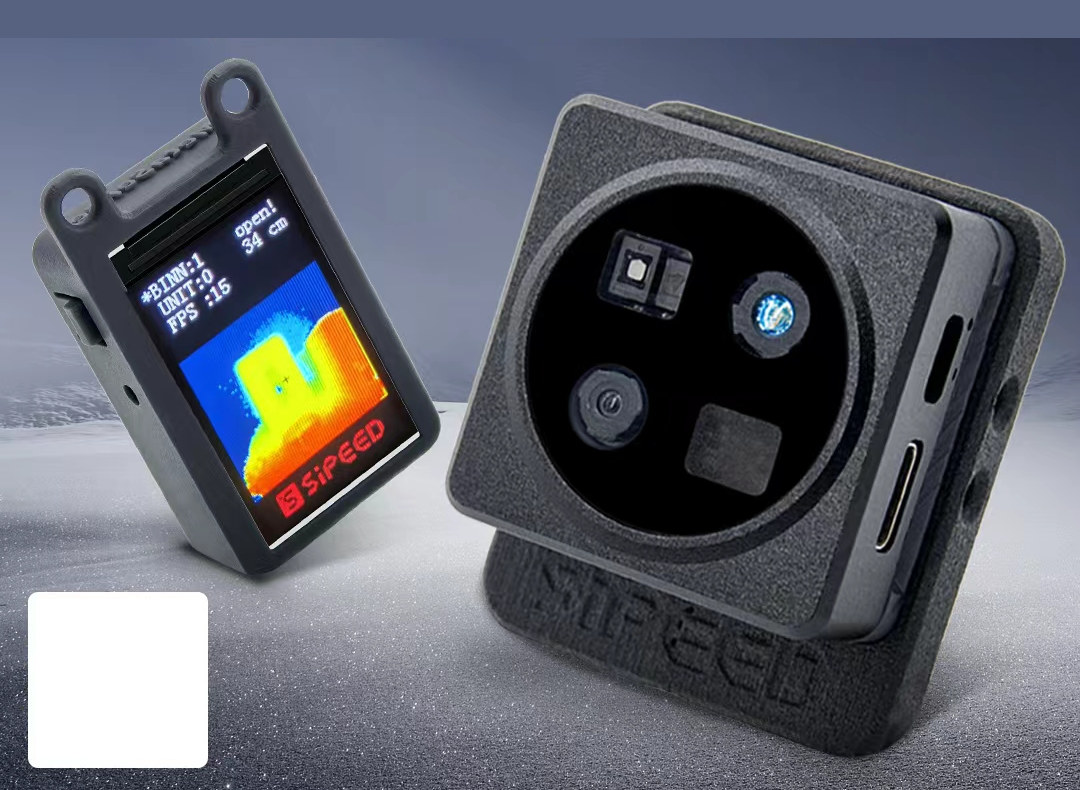ESP32-S3 has been in the news recently and we just wrote about the Bee S3 and BPI-PicoW-S3 boards yesterday, but there’s more, and LilyGo T-SIMCAM ESP32-S3 is another interesting ESP32-S3 board with a 2MP camera as well as support for an optional 4G LTE module. The board can make use of the AI capabilities from the ESP32-S3 microcontroller through the built-in camera and microphone and offers two options for power with 5V through a USB Type-C port, as well as a 2-pin JST connector for connecting a battery. T-SIMCAM ESP32-S3 CAM board specifications: Wireless MCU – ESP32-S3R8 dual-core Xtensa LX7 microcontroller with WiFi 4 and Bluetooth 5.0 LE and Mesh connectivity with 8MB PSRAM Storage – 16MB QSPI flash, MicroSD card socket Camera – 2MP OV2640 camera with 1622×1200 resolution Audio – I2S digital microphone Connectivity – Optional NB-IoT, 2G GSM, or 3G/4G LTE module via mPCIe socket and SIM […]
M5Stack Thermal Camera 2 Unit combines ESP32 WiSoC with MLX90640 thermal camera
We’ve already seen the ESP32 used with a thermal camera (Flir Lepton 3.5) in the tCam-Mini IR board, but M5Stack Thermal Camera 2 Unit offers a more affordable ESP32 thermal camera solution thanks to the MLX90640 IR array thermal camera with a 32×24 resolution. Based on the ESP32-PICO-D4 system-in-package (SiP) with a dual-core microcontroller offering WiFi and Bluetooth connectivity, the camera module offers a field of view of 110°x75°, and a temperature measurement range of -40°C to 300°C. M5Stack Thermal Camera 2 Unit specifications: SiP – ESP32-PICO-D4 system-in-package with ESP32 dual-core Tensilica LX6 cores, 448 KB ROM, 520 KB SRAM, 4MB SPI flash, 2.4 GHz WiFi 4 and Bluetooth 4.2 IR camera – Melexis MLX90640 Infrared (IR) sensor with 32×24 pixels IR array, range: -40°C to 300°C with +/-1.5°C resolution, FoV: 110°x75° (See datasheet) Expansion – Grove I2C HY2.0-4P interface (“Port A”) Misc – Reset button, passive buzzer, user RGB […]
Miniature dual camera Full HD or 4K encoder boards support RGB and thermal cameras
Z3 Technology has introduced several miniature dual-camera encoder boards with the PoE-capable FV2K-13A and FV4K-13A boards capable of handling two visible and/or thermal cameras at Full HD or 4K resolution respectively, along with the FV2K-15A and FV4K-15A variants equipped with low-profile connectors. All four models enable H.265/H.264 video streaming of a single or dual camera system, support ONVIF Profile S and T profile, and comply with the NDAA law in the US. This set of features as well as low power consumption and the lightweight designs make the boards suitable for UAV, inspection, surveillance, and other weight-constrained applications. Z3 Technology FV2K-13A and FV4K-13A dual-camera encoder boards specifications: SoC – Ambarella CV22 quad-core Cortex-A53 processor with 4Kp60 encoder (see PDF product brief) Storage – MicroSD, USB, or NFS Camera interfaces FV2K-13A Visible Camera Formats – Sony FCB-EV7520(A) and FCB-EV9500L HD and SD IR Formats – RS170, NTSC/PAL, and LVDS FV4K-13A Visible […]
JeVois-Pro ultra-compact deep learning camera gets 26 TOPS Hailo-8 AI accelerator
JeVois-Pro tiny AI camera was introduced last year with an Amlogic A311D processor with a built-in 5 TOPS NPU, and support for an Intel Myriad X or Google Edge TPU M.2 card all that in a compact 50x50x45 mm box. The company has now managed to get hold of some M.2 A+E 2230 Hailo-8 modules delivering up to 26 TOPS of AI performance and is selling for JeVois-Pro ultra-compact deep learning camera with the Hailo-8 accelerator for $599 delivering up to 31 TOPS once we include the built-in 5 TOPS NPU. I won’t go through the full specifications again, but in a nutshell, that’s a camera designed for robotics projects, powered by an Amlogic A311D hexa-core Cortex-A73/A53 processor with 4GB RAM, a microSD card socket for the OS and data, and a 2MP Sony IMX290 Starvis sensor. Since the system is quite compact and the AI accelerator fairly powerful, […]
Ochin Raspberry Pi CM4 carrier board is made for drones and robots
There are plenty of carrier boards for Raspberry Pi CM4, but the Ochin looks a bit different, as it is specifically designed for drones and robots, and the compact carrier board exposes most interfaces through low-profile GHS connectors instead of standard ports or headers. About the size of the Raspberry Pi CM4 itself, the board also comes with a USB Type-C port to flash the eMMC flash, two MIPI CSI connectors, and four USB 2.0 GHS connectors to add cameras to your robotics projects, and supports LiPo batteries. Ochin specifications: Supported modules – Raspberry Pi CM4 with Broadcom BCM2711 quad-core Cortex-A72 processor, up to 8GB RAM, up to 32GB eMMC flash (the CM4 Lite is not supported since there’s no microSD card on the board), 4Kp60 H.265 decode, 1080p30 H.264 encode, and optional WiFI 5 and Bluetooth 5.0 USB – 1x USB 2.0 Type-C port Camera I/F – 1x 4-lane […]
Luxonis OAK-D series 2 USB and PoE cameras integrate 3D depth and AI for robotics applications
Luxonis OAK-D Series 2 are the second-generation of USB or PoE cameras with 3D depth and a built-in AI accelerator mostly used for computer vision in robotics applications. We first wrote about Luxonis’ DepthAI module for Raspberry Pi based on the Intel Myriad X AI accelerator in 2019, and later found the module integrated into OpenCV AI Kit Lite, aka OAK-D Lite camera. The second-generation OAK-D cameras replace the module with a Robotics Vision Core 2 (RVC2) “chip-down design” equipped an SoC and Myriad X AI accelerator for up to 4 TOPS of processing power, including 1.4 TOPS for AI inference. Luxonis OAK-D Series 2 specifications and features: Robotics Vision Core 2 based on Myriad X AI accelerator 4 TOPS of processing power (1.4 TOPS for AI) Video encoding – H.264, H.265, MJPEG @ 4Kp3, 1080p60 Computer vision – Warp/dewarp, resize, crop via ImageManip node, edge detection, feature tracking, custom […]
Picamera2 Python camera library for Raspberry Pi leverages libcamera open-source framework
Raspberry Pi Trading released a new version of Raspberry Pi OS last week with the highlight being the Picamera2 Python library for Raspberry Pi cameras, along with small changes such as the ability to search menu items, a new audio input control, The new Picamera2 library was first announced in mid February 2022 with a preview release, and it’s the first time the Python library is included by default in Raspberry Pi OS. It is now based on the libcamera open-source framework instead of the proprietary and closed camera APIs from Broadcom found in the original Picamera library. Some of the key features of the Picamera2 library include: The preview windows use OpenGL acceleration for hardware-assisted rendering or DRM/KMS for efficient rendering when X Windows is not running Picamera2 commands can be typed into a Python interpreter or scripts Support for embedding Picamera2 widgets into Qt applications NumPy integration provides […]
Sipeed MetaSense RGB ToF 3D depth cameras are made for MCUs & ROS Robots (Crowfunding)
We’ve just written about the Arducam ToF camera to add depth sensing to Raspberry Pi, but there are now more choices, as Sipeed has just introduced its MetaSense ToF (Time-of-Flight) camera family for microcontrollers and robots running ROS with two models offering different sets of features and capabilities. The MetaSense A075V USB camera offers 320×240 depth resolution plus an extra RGB sensor, an IMU unit, and a CPU with built-in NPU that makes it ideal for ROS 1/2 robots, while the lower-end MetaSense A010 ToF camera offers up to 100×100 resolution, integrates a 1.14-inch LCD display to visualize depth data in real-time and can be connected to a microcontroller host, or even a Raspberry Pi, through UART or USB. MetaSense A075V specifications: SoC – Unnamed quad-core Arm Cortex-A7 processor @ 1.5 GHz with 0.4 TOPS NPU System Memory – 128 MB RAM Storage – 128MB flash Cameras 800×600 @ 30 […]


